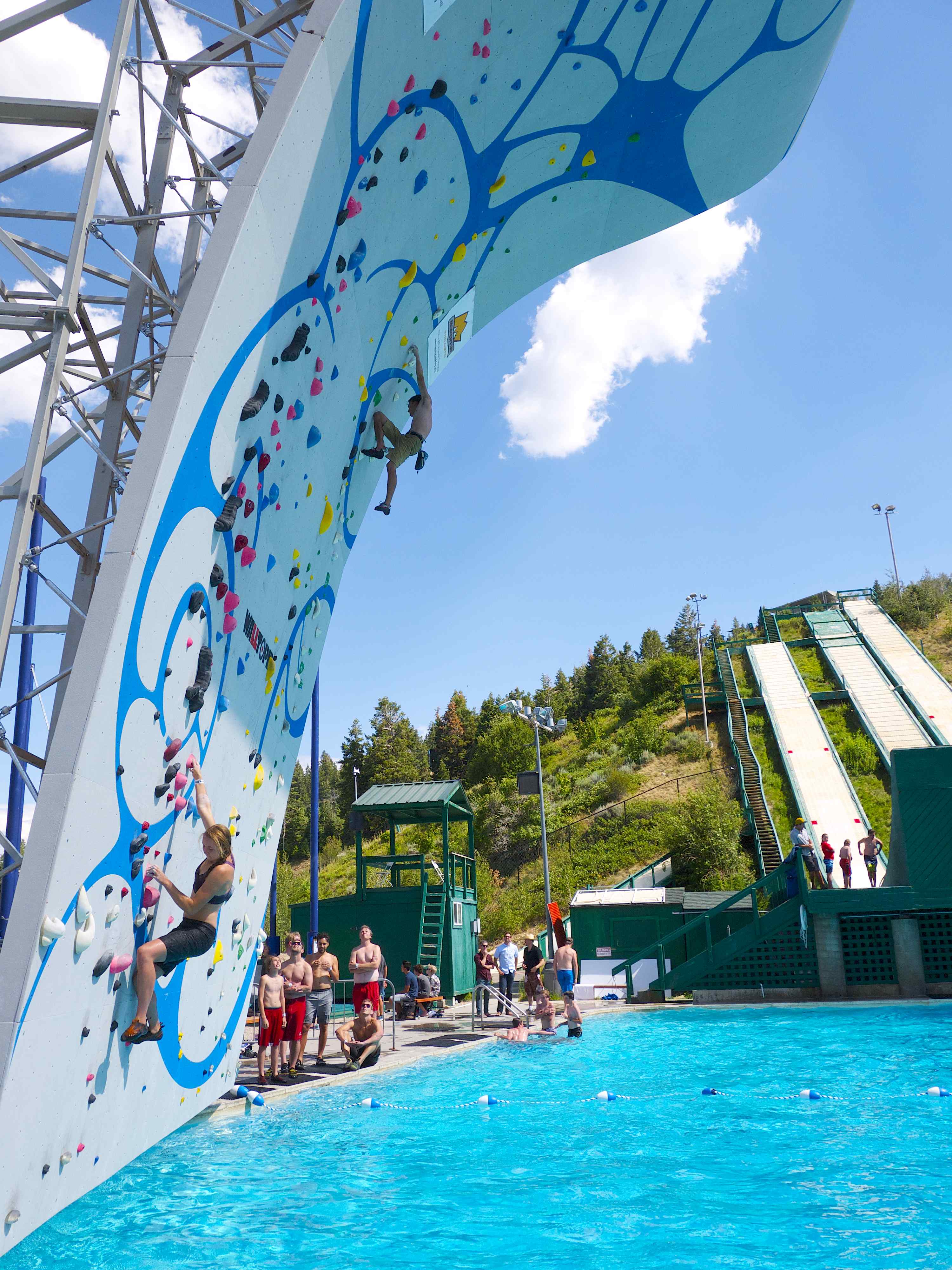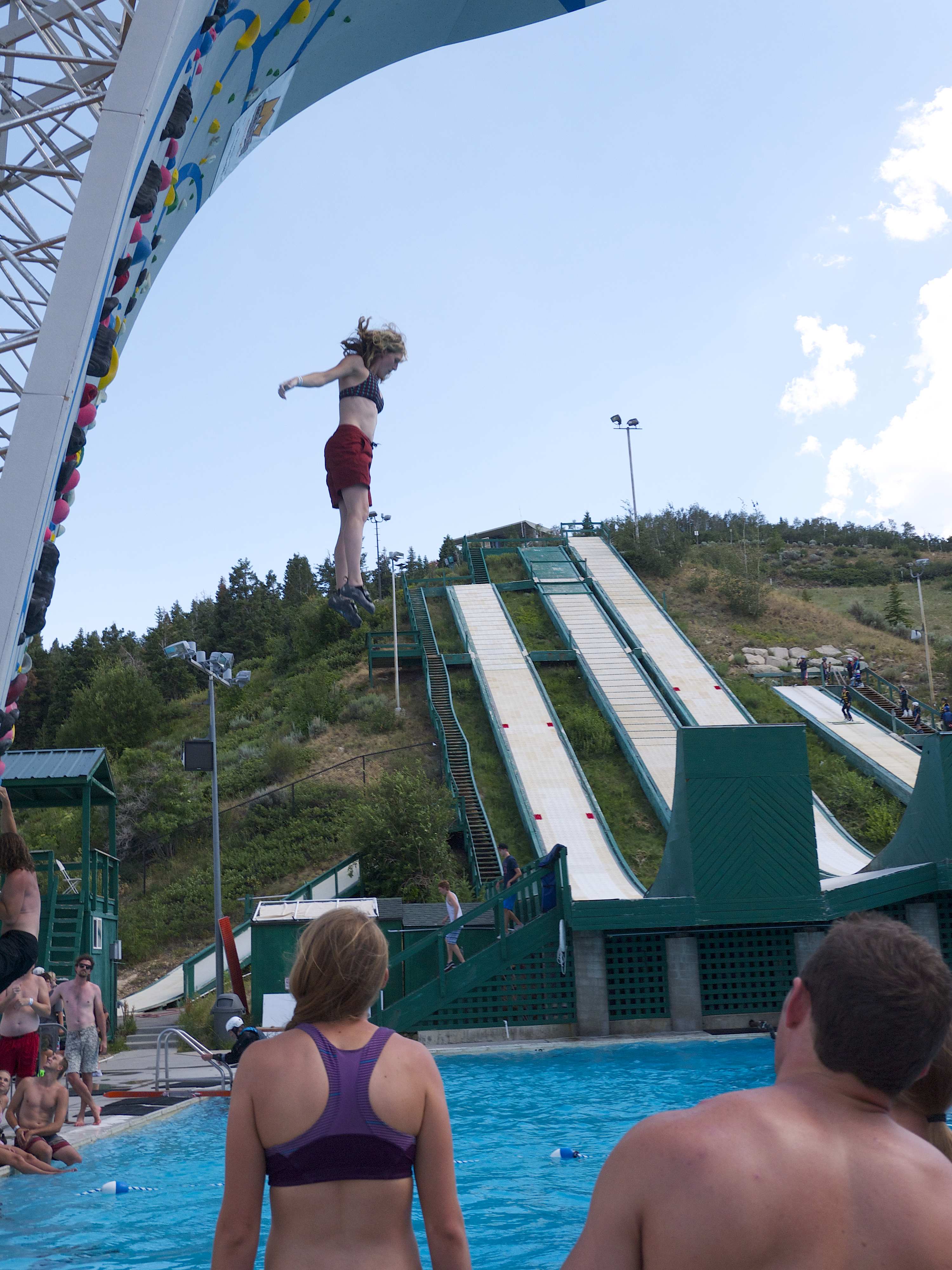I grabbed the sloping hold three times but failed to commit. The twenty foot fall into the water below scared me. As I pawed at the hold, I thought about how I swam like a stone. My legs quivered a bit. I down climbed and stepped off the wall, never committing to a move that I knew I was capable of.
The PsicoComp Wall in Park City offered Mason and I a great opportunity to climb outside and escape a bit of the oppressive Utah heat. A half dozen routes from 5.9 to 5.13 climbed half way up the fifty foot wall. The upcoming PsicoComp wall provided an awesome summer treat but also served as a great reminder of one of my biggest weaknesses in climbing. I get scared.

Mason Earle on right, climbs high on the comp wall.
Fear can be described in two types: Rational and Irrational. Rational fear is when you are in an actual dangerous situation like you’re in over your head on hard climbing with no gear. Irrational Fear is when you get scared for no reason like when you’re sport climbing and can’t climb above your bolt. Irrational fear can be quite frustrating because despite knowing that a situation is safe, like taking a twenty foot fall into water, it is psychologically debilitating.
“One of the really useful things I think was to approach things mindfully. As in to be fully aware of what you’re doing and why,” said noted free soloist Alex Honnold when asked about how he deals with fear. “So if something is dangerous, you evaluate it and decide whether or not you actually want to proceed. And if it seems too dangerous, you retreat with no doubts.”
There are times when even Honnold gets scared though. I asked him about how he manages his fear. “I don’t think it’s so much about managing my fear, as not getting fearful to begin with. With routes like Ambrosia (a forty foot highball in Bishop California) and long solos you deal with all the uncertainty and fear before you start. You manage all that stuff on the ground. Then when you climb the route it’s already taken care of. So while you’re climbing, you don’t get scared,” said Honnold.“But sometimes when I’m onsight soloing or even just doing stuff on gear I’ll get gripped for whatever reason. Then I just do what everybody else does, take some deep breaths and try to keep it together.”

Rosie takes a practice plunge off the wall
A few of the other climbers at the pool took practice falls from lower heights. They became used to the idea of falling into the water and realized that much of their hesitance in climbing was from Irrational Fear. I noticed that climbing faster would get me to the crux less pumped and I’d be more prepared for the crux. “Fatigue makes cowards of us all,” said Vince Lombardi.
I fell in a few times low on the wall and then I stared at the wall. Mason encouraged me to “just go for it.” Before leaving the ground, I chalked my hands thoroughly and committed to climbing well. I moved high on the wall, grabbed the sloper and moved into the next hold. I fought through a series of good pinches towards the top and threw for the last hold. I came up a few inches short. I screamed and splashed into the water 25 feet below. I swam back up, ready to try again.

